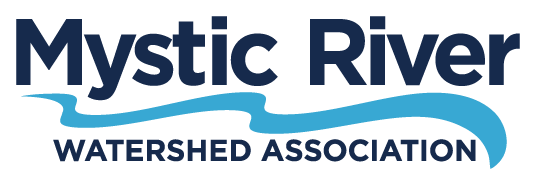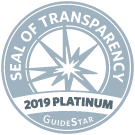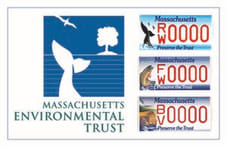Over 100 million gallons of combined sewage and stormwater were released into the Mystic River and Alewife Brook in 2024.
On Wednesday, January 22, 2025, the Massachusetts Water Resources Authority (MWRA) and the cities of Cambridge and Somerville convened a public meeting about Combined Sewer Overflows (CSOs) in the Mystic River and Charles River watersheds. Over 300 people joined the evening Zoom to learn about the options under consideration for tackling CSOs in greater Boston.
Why so much interest in a technical presentation by state and city officials? Answer: Raw sewage continues to pollute Boston’s rivers during heavy rainstorms, a challenge that will only worsen as climate change brings more intense rain to Massachusetts.
In 2024, over 100 million gallons of raw and partially treated combined sewage were discharged into the Mystic River and its tributaries during 58 CSO events – a volume greater than 150 Olympic swimming pools. The Alewife Brook, a small tributary of the Mystic that receives the highest volumes of completely untreated CSOs of any river or stream in greater Boston, received nearly 19 million gallons of combined sewage.
Fig 1. CSOs in wet and dry weather. Adapted from EPA.gov
Combined Sewer Overflows remain a persistent environmental hazard in the Mystic River watershed, posing a threat to public health and ecosystems. They continue to disproportionately affect low-income, non-white, and linguistically diverse neighborhoods, perpetuating an environmental justice tragedy that must be addressed.
By the end of the year, we anticipate the MWRA and the cities of Cambridge and Somerville to present a draft of their plan for the next stage of CSO mitigation in greater Boston. With CSO volumes still measured in the hundreds of millions of gallons, we must continue to show up to advocate for CSO controls this year.
WHAT ARE CSOs?
Combined Sewer Outfalls are engineered overflow structures within underground pipes that typically transport a mixture of sewage and rainwater to the Deer Island Treatment Plant. During wet weather, especially when a lot of water falls in a very short period of time, the amount of water coming through the system is more than the pipes can handle, so they are designed to overflow into the nearest waterbody rather than back up into people’s homes, sending the combined sewage and stormwater into rivers and streams. These events are called Combined Sewer Overflows.
Fig 2. Number of CSO releases in 2024 in the Mystic River watershed
Fig 3. CSO Volumes in 2024, treated and untreated, in the Mystic River watershed
Importantly, the types of storms that cause CSOs are getting more frequent as our climate changes. 2024 saw wet conditions in the first half of the year followed by an extended drought in the late summer and fall. Because of these weather patterns, most CSOs this year occurred before September.
Despite 2024 being dryer than 2023, we still saw over 100 million gallons of CSO discharge into the Mystic River and the Alewife Brook during the rainier months. We expect to see similar patterns in years to come with wet years generating an increased frequency of CSO discharges and higher total volumes of CSOs, and wetter years overall as the climate changes. In fact, we expect to see the number of CSO activations to double and the volume of CSO discharges to more than quadruple for the average conditions of 2050 compared to 1992.
WHAT IS THE PLAN TO CONTROL CSOs?
The most recent public meeting provided an update on the ongoing CSO Long Term Control Plan, the result of a decades-old court case that requires that the MWRA undertake certain corrective actions to reduce or eliminate CSO discharges to the rivers that flow into Boston Harbor. At the meeting, the MWRA and the cities of Cambridge and Somerville presented initial combinations of options or “alternatives” they are considering ahead of a more formal presentation later this year.
Among the solutions under consideration are neighborhood-scale sewer separation projects, large storage tunnels, and investments in green infrastructure. These considerations take into account the changes in rainfall patterns we expect to see in the years to come and include preliminary cost estimates. A recording and slides from the public meeting are available if you want to learn more. You can also take a look at the results of a poll of attendees to learn about who is interested and why so many people care.
Stormwater wetland at the Alewife Reservation that accepts stormwater from a previous sewer separation project. Photo: Stantec
what comes next?
CSO Control Plan Schedule. Click to enlarge
Over the next few months, the cities and the MWRA will refine their options to come up with more formal alternatives. They will also begin an assessment of the financial impact of these potential projects on the cities and everyday ratepayers. The project team is also planning to hold a listening session within the next few months to hear feedback directly from community members. By the end of 2025, we expect a draft plan to be released for review by the US Environmental Protection Agency (EPA), the Massachusetts Department of Environmental Protection (Mass DEP), and the public. You can follow along with the progress here.
The process that is unfolding now will set the path for CSO mitigation in greater Boston for decades to come, and the decisions that are made over the next two years will be set in stone. It is important now more than ever to stay involved. This is a once-in-a-generation opportunity to show a groundswell of public support for investments in infrastructure that protects our rivers and streams and the public health of our neighbors and ourselves.
how can you help?
Add Your Voice to the CSO Conversation
Subscribe to the MyRWA e-news to receive updates about CSOs in the Mystic and to stay in the loop about opportunities for public involvement in the CSO Long-Term Control Plan and join us at any of the upcoming meetings.
Contact your legislators to let them know that you care about CSOs and want to see investment in the improvement of stormwater infrastructure. Find your legislator here.
When the opportunity arises, vote yes on increased stormwater funding in your municipality. Better stormwater infrastructure can reduce the flow of rainwater through combined systems, help mitigate CSOs, and decrease street flooding.
Stay Informed: Sign up for CSO Notifications
Use the MWRA notification sign up. You need to create an account – but then you will be notified of any CSOs in the area. The cities of Boston, Cambridge, Chelsea, and Somerville manage their own combined sewer outfalls, including CSO reporting, so you can sign up for those alerts separately through their respective websites.






